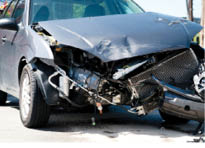 Pre-Existing Injuries and why they increase the value of an injury claim!
Pre-Existing Injuries and why they increase the value of an injury claim!
An all too common problem is the patient with pre-existing conditions or injuries who comes to you for care after a car crash. You may ask, how should this be handled? Very often, I hear lawyers and doctors try to ignore, forget, or bury the prior injury or condition. This is a recipe for disaster. By downplaying the pre-existing condition, you will destroy the patient’s credibility with a jury, and the insurance adjuster. Omitting or downplaying the pre-existing condition also makes the doctor look really bad on the stand, and results in a win for the defense team. The defense will know about every prior insurance claim, thanks to Insurance Office Service, Inc., which, for $25.00, will provide a full report of any and all insurance claims in their massive data base. The good news is that the law is generally quite helpful for the patient who suffers from a pre-existing condition.
The law basically says: If the patient’s injury (from the new car crash) resulted from an aggravation of an existing injury or disease (such as degenerative changes), the jury should attempt to determine what portion of the patient’s condition was caused by the car crash. If the jury cannot determine what new damages were caused by the crash, then the jury is told to award damages for the entire condition.
So, the good news is that a pre-existing condition does not hurt the patient’s claim. In my opinion, it makes it easier to explain to a jury why it does not take as much trauma to injure my client, considering he/she was already suffering from the pre-existing disease or condition. This really helps with the causation issue in a low speed crash. Juries get it that the recent car crash is really the straw that broke the camel’s back.
Once the jury understands that the crash caused the bigger problem, they have a hard job separating the new injuries from the old ones. If they can’t clearly separate the old injuries from the new ones, then they should award damages for everything.
As a practical matter, you have to really educate your patients about why a pre-existing condition can help their case. If they understand the implications of the pre-existing condition to the value of their injury case, they will give you a better history. They won’t be tempted to forget about their old problems in hopes it will help their case.
At trial, when my client has pre-existing injuries, I always bring this out early so that everyone knows we are not trying to downplay them. When I call my clients to the witness stand, I ask them a line of questions about how did they felt five minutes before the crash? Was their old neck injury bothering them at that time? How about one hour before? How about one day before the crash? When did it last bother them before this crash?
“Oh, I was doing very well for about ____ months.”
Then I ask, “How did it feel after the crash?”
“Oh, it was terrible; it was like three times worse than it had ever been before.”
Then, when I call my doctor to the stand, we talk about how my client was damaged goods before this crash due to the pre-existing conditions, why he/she was hurt more easily by the crash, and why the injury is more serious than it would have been for someone who did not have these pre-existing conditions.
If we are lucky enough to have digital motion X-rays taken before the car crash, then I request a second digital motion X-ray taken after the crash to compare the studies. With the help of some of today’s X-Ray digitizing software, such as the DxAnalyzer, we can make great objective comparisons between the two studies, allowing us to accurately show how much worse the pre-existing condition has been made due to the crash.
Don’t be shy about pre-existing conditions. Embrace them for what they are; use them to increase the value of your patient’s legal claim, not reduce it.
Matthew Powell is a trial lawyer in Tampa, Florida, who started his career representing over twenty insurance companies. After learning the defense side, he quickly found he could not represent insurance companies, and started out on his own to represent injured victims. He is a frequent speaker and instructor, teaching lawyers and chiropractors how to sharpen their skills in trying low-speed rear-end car collision cases. He has had the honor of obtaining a $1,000,000 verdict for a case the defense described as a minor fender bender. He can be reached at [email protected].
